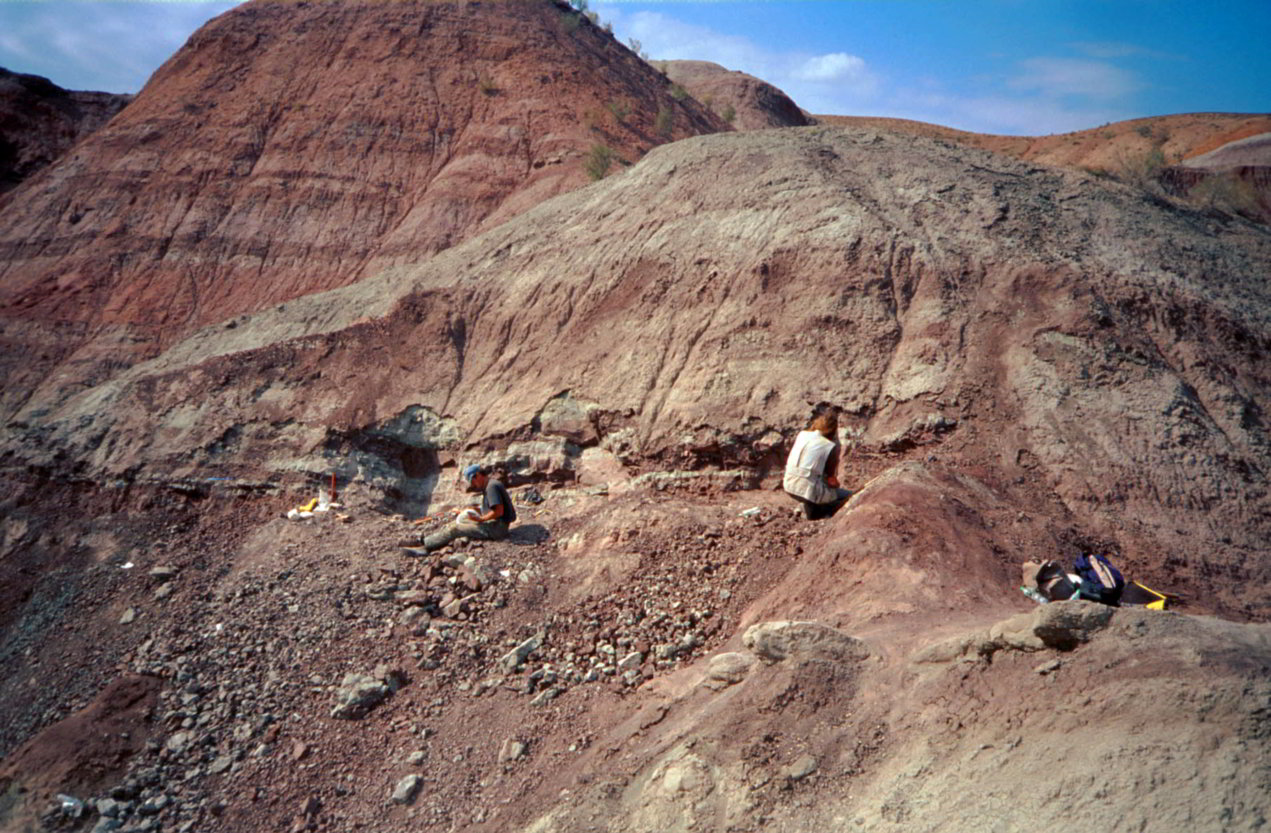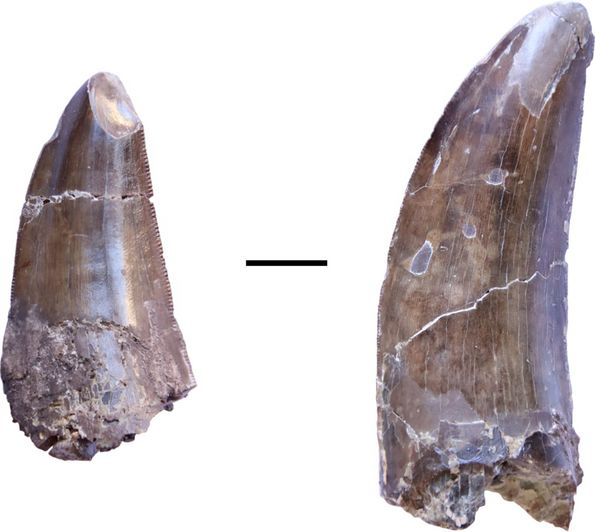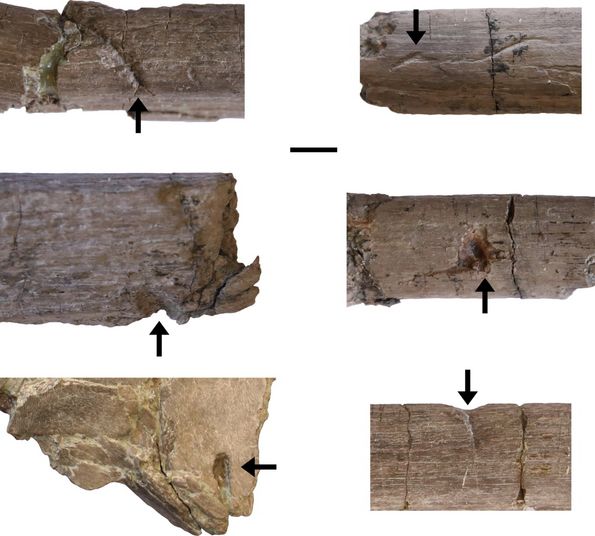The carcass of a large long-necked dinosaur in the Junggar Basin in northwestern China served as food for several other dinosaurs, Tübingen paleontologists say, citing tooth marks on the bones and several dinosaur teeth, which matched the tooth marks perfectly. A research team from the Geoscience Department at the University of Tübingen found that the large number of bite marks on the 20-meter carcass showed that other animals fed on it for a long period of time. The bones and teeth were preserved in situ by favorable climatic and geological conditions for more than 160 million years. For the paleontologists this is a rare stroke of luck, as little is known about the feeding behavior of large predatory dinosaurs. The team's study has been published in the journal Palaeogeography, Palaeoclimatology, Palaeoecology.
At least one large carnivorous dinosaur of approximately 7.5 meters length and a smaller one some three meters long gnawed on the carcass of the long-necked mamenchisaur, says Felix Augustin, the study's lead author. Four of the teeth found nearby, and most of the bite marks on the bones, were from the large dinosaur, a carnosaur. "Sometimes the teeth fit exactly into the holes in the bone," Augustin reports. Another tooth found at the site enabled the researchers to identify a smaller coelurosaur, a diverse group of dinosaurs found the world over. The team believes the teeth fell out while the dinosaurs were eating. In an earlier study, the research team described much smaller tooth marks on the same skeleton as the earliest known evidence that mammals ate dinosaur meat (press release of July 31, 2020).
Trampled bones
The finds originate from today's Junggar Basin in the province of Xinjiang in northwest China. There, researchers on a Chinese-German expedition in 2000 excavated numerous fossils of vertebrates such as turtles and crocodiles, dinosaurs and mammals from the Jurassic period, the time about 160 million years before today. The bones and teeth are currently being stored in Tübingen, where experts in vertebrate paleontology have been reviewing them since last year.
Many of the mamenchisaurus' bones were broken in many places or even shattered. "One or more large animals must have trampled the bones when visiting the feeding place; probably it was the large carnivorous dinosaurs," says Augustin. Some of the bones themselves appear to have been partially or completely eaten. "This is rare in carnivorous dinosaurs. So far, it has mainly been documented in tyrannosaurs."
Publication:
- Felix J. Augustin, Andreas T. Matzke, Michael W. Maisch, Hans-Ulrich Pfretzschner: A theropod dinosaur feeding site from the Upper Jurassic of the Junggar Basin, NW China. Palaeogeography, Palaeoclimatology, Palaeoecology, https://doi.org/10.1016/j.palaeo.2020.109999
Earlier publication:
- Press release When mammals ate dinosaurs of 31 July 2020
- Felix J. Augustin & Andreas T. Matzke & Michael W. Maisch & Juliane K. Hinz & Hans-Ulrich Pfretzschner: The smallest eating the largest: the oldest mammalian feeding traces on dinosaur bone from the Late Jurassic of the Junggar Basin (northwestern China). The Science of Nature, 107, 4 (32), 1-5; https://doi.org/10.1007/s00114-020-01688-9









